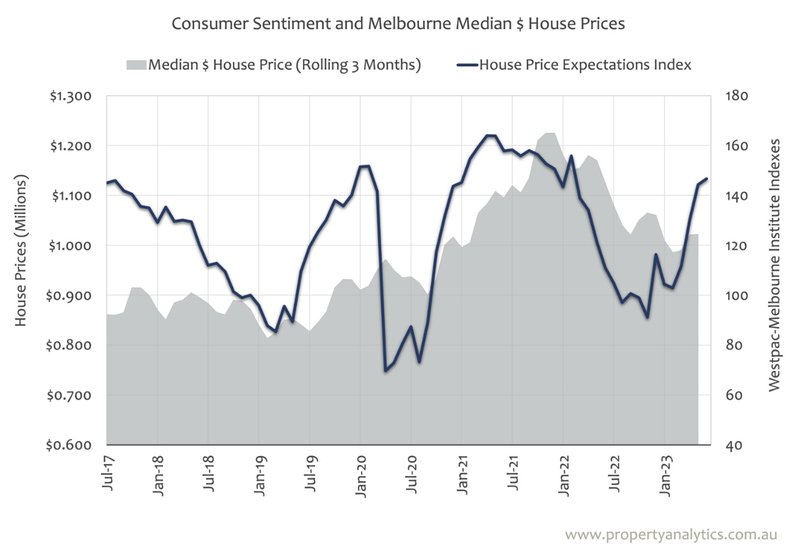It feels as though we've entered a 'new market', again. The pace of change over the past six years has been unprecedented, with fluctuating prices and shifting market conditions. The traditional notion of property cycles lasting around seven years no longer applies.
Between 2018 and 2019, prices experienced a decline of approximately 12%. Though they began to rebound, the arrival of the COVID-19 pandemic in early 2020 caused the market to wobble once again. However, prices subsequently surged by an impressive 30% through late 2021 and early 2022. Since reaching its peak, the overall housing prices across Melbourne have fallen by approximately 15%. The pattern of ups and downs has disrupted the conventional belief in predictable property cycles.
Last year, buyer demand remained subdued. As interest rates started to rise from May, market sentiment significantly deteriorated, leading to Auction Clearance Rates falling into the 60s. The supply of properties available for sale exceeded the demand from prospective buyers, resulting in an undeniable buyer's market.
The property market has undergone rapid transformations in the first half of 2023, primarily due to several key factors. Firstly, the number of listed properties for sale has significantly decreased. Conversations with agents, brokers, and buyers all point to a scarcity of available stock. Many potential sellers are choosing to hold off on selling, which can create a self-fulfilling trend when buyers are unable to find suitable properties.
Secondly, the commercial viability of development projects has been impacted by a staggering 20% escalation in construction costs. Consequently, there has been a decline in the number of properties being built.
Thirdly, population growth has resumed, with net overseas migration into Australia projected to reach around 450,000 this financial year (equivalent to over 1,200 per day). Victoria has once again become a favoured destination for many migrants. Significantly, sentiment in the market has improved. House Price Expectations have shown a strong correlation with actual House Price movements. The following graph illustrates their parallel trends in recent years.

Between 2017 and early 2019, House Price Expectations declined, causing actual House Prices to flatten and fall. Sentiment gradually improved until early 2020 when COVID-19 hit, leading to fluctuations in both House Price Expectations and actual prices. However, from mid-2020 to late 2021, House Price Expectations soared, and actual prices followed suit.
While market sentiment softened throughout 2022, there has been a considerable rebound in the first half of 2023. More individuals now anticipate an increase in House Prices. This renewed sentiment aligns with some key metrics tracked by Nelson Alexander. The company has observed increased buyer enquiries, greater attendance at open inspections, and heightened competition among buyers at auctions and private sales.
Although interest rates are expected to rise slightly, experts are not predicting a sudden surge in property prices in the near term. However, the supply versus demand pressures mentioned earlier, combined with the significantly improved sentiment, confirm that we are witnessing the emergence of a new market.
The Melbourne housing market has experienced a whirlwind of changes over the past six years, challenging conventional wisdom about property cycles. The interplay of factors such as fluctuating prices, buyer dynamics, reduced property listings, increased construction costs, population growth, and improved sentiment has ushered in a new era. While short-term predictions remain cautious, the ground reality suggests that we are indeed in uncharted territory.
Please contact a Nelson Alexander office to obtain further information on buying and selling in the current market.

